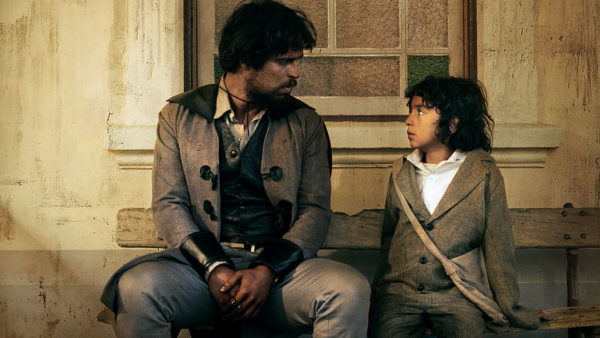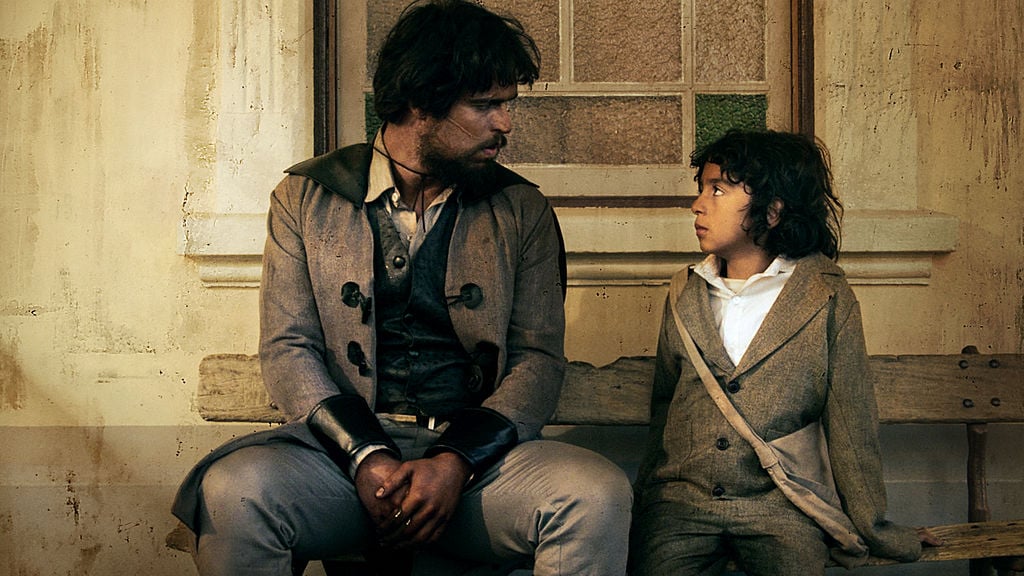
The word “badlands” has never held so much weight as in “The Killer.” Netflix’s original movie is easily the most uniquely creative Western since “Django Unchained,” and a close contender for the best of its genre of the past five years. Like the Spaghetti Westerns of the 1960’s, Brazilian director Marcelo Galvão proves that you don’t have to be American to embrace this distinctly Americana genre. He elevates both the camp and the grit of the US-made classics to create a film that unifies the best aspects of both, combining them in a startlingly brutal experience that matches the bleak setting.
The film’s badlands don’t look much different from the hills north of Hollywood where most older Westerns were filmed. They’re complete with scraggly bushes and roving rattlesnakes, but while movies like “The Searchers” or “True Grit” emphasize its bizarre beauty, “The Killer” sees it as the bleak desert that it is. The world it paints is one in where babies are left for dead in the wilderness, where who deserves to live is determined only by who is able to survive and where the majority of human interaction comes through the barrel of gun. Blood is cheap here, cheaper than any Western in memory. While “Django Unchained” or “The Wild Bunch” delight in the spectacle of slaughter, “The Killer,” like its protagonist (and like most of its characters), looks at death with a cold, unblinking stare. Death is routine, gunshots rarely miss, and the camera cuts away before most bodies even hit the floor.
The titular killer, the self-named Cabeleira (Diego Morgado), is a wild man of the Wild West, a Tarzan-esque figure with crooked teeth and hair clotted with dirt and blood. His grunting, rumbling voice rarely speaks more than a few words at a time, and he finds no trouble in transferring his childhood hunting/survival skills from animals to human beings. He’s only one of the exaggerated comic-book villains in a darkly eclectic ensemble, which ranges from a “blonde-haired devil” who uses random passersby as target practice to a bespectacled sketch artist whose reserved demeanor hides an explosive penchant for violence. Their stories are united by a wealthy quirky French pimp whose refined perversion and elegant exploitation clashes beautifully with the dust and dirt around him.
Cabeleira readily and willingly slaughters any innocents who refuse to sell the Frenchman their land. Addicted to the pleasures of prostitutes, Cabaleira’s only concern is keeping his pockets full enough to share a bed for the night. The film wastes no time in telling us he’s sold his soul to the devil, indulging in the unforgiving life of the badlands just as much as his equally savage co-stars.
Yet in a world so devoid of meaning, where life is cheaper than a single valuable stone and where blood waters the earth more than rain, “The Killer” accomplishes the impossible. It subverts the nihilistic worldview it works so hard to create. It finds hope.
Cabaleira’s story has just enough poignancy, just enough human heart beating under its reptilian surface, to outbalance the utterly exploitative and ruthless subplots that star the film’s other sociopathic murderers. The opening act illustrates a gruff but intimate relationship between Cabaleira and his adopted father and his naive childlike hope in reuniting with his only family becomes his heart-rending driving force. Cabaleira is never redeemed, per say, and he certainly never becomes a Clint Eastwood-like figure of justice, but when he inevitably takes on the role of the father he lost (for the first time raising and preserving a person rather than killing one), director Galvão manages to find enough life in his cold desert of a film that “The Killer” never becomes emotionally exhausting.
At the end of the day, “The Killer” is a bleak film that feels anything but. Of the many characters, few survive to see the end credits, and few deserve to, but the unrelenting death and destruction serves only to highlight the good within the sea of evil. As Arlo Guthrie said, “you can’t have a light without a dark to stick it in.” And in the film’s abundant darkness, its light shines all the brighter.
Contact Noah Howard at noah364 ‘at’ stanford.edu.
